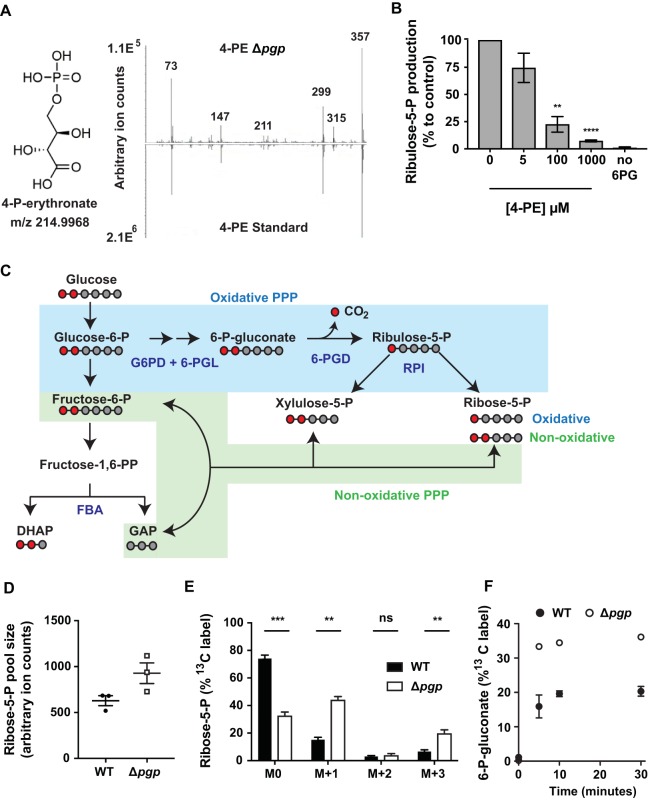FIG 3.
Loss of PGP leads to inhibition of 6-PGD and enhanced flux through the oxidative PPP. (A) Chemical structure of 4-PE (C4H9O8P) and GC-MS confirmation of 4-PE in P. falciparum. (B) Synthetic 4-PE was added to lysates of saponin-purified trophozoites, together with 6-phosphogluconate (6-PG), and the activity of 6-PGD was assessed by measurement of production of ribulose-5-P by GC-MS. Data are presented as percentages of the no 4-PE condition, with means ± SEM from four to five independent experiments performed on different days, and statistical significance was determined using one-way ANOVA in comparison to the condition of 0 mM 4-PE (**, P < 0.01; ****, P < 0.0001). (C) Schematic of the pentose phosphate pathway (PPP) in P. falciparum. Where relevant, carbon backbones are presented as gray (unlabeled) or red (13C-labeled) circles. The relative activity of the oxidative and nonoxidative PPP was monitored with 1,2-13C2-glucose incorporation into ribose-5-P, with one and two labeled carbons corresponding to oxidative and nonoxidative PPP activity, respectively. (D and E) The ribose-5-P pool sizes (D) and percent label into ribose-5-P following 1,2-13C2-glucose labeling (E). M + 1 represents the fraction of ribose-5-P derived from the oxidative arm, M + 2 represents the contribution of the nonoxidative arm, and M + 3 comprises both oxidative and nonoxidative labeling. Data are presented as the means ± SEM from three independent experiments performed on different days. Statistical significance was determined using unpaired t testing (ns, nonsignificant; **, P < 0.01; ***, P < 0.001). (F) The percent label into 6-phosphogluconate (6-P-gluconate) following 30 min of 13C6-glucose incorporation (1:1 12C:13C). Data are presented as the means ± SEM from three independent experiments performed on different days.

